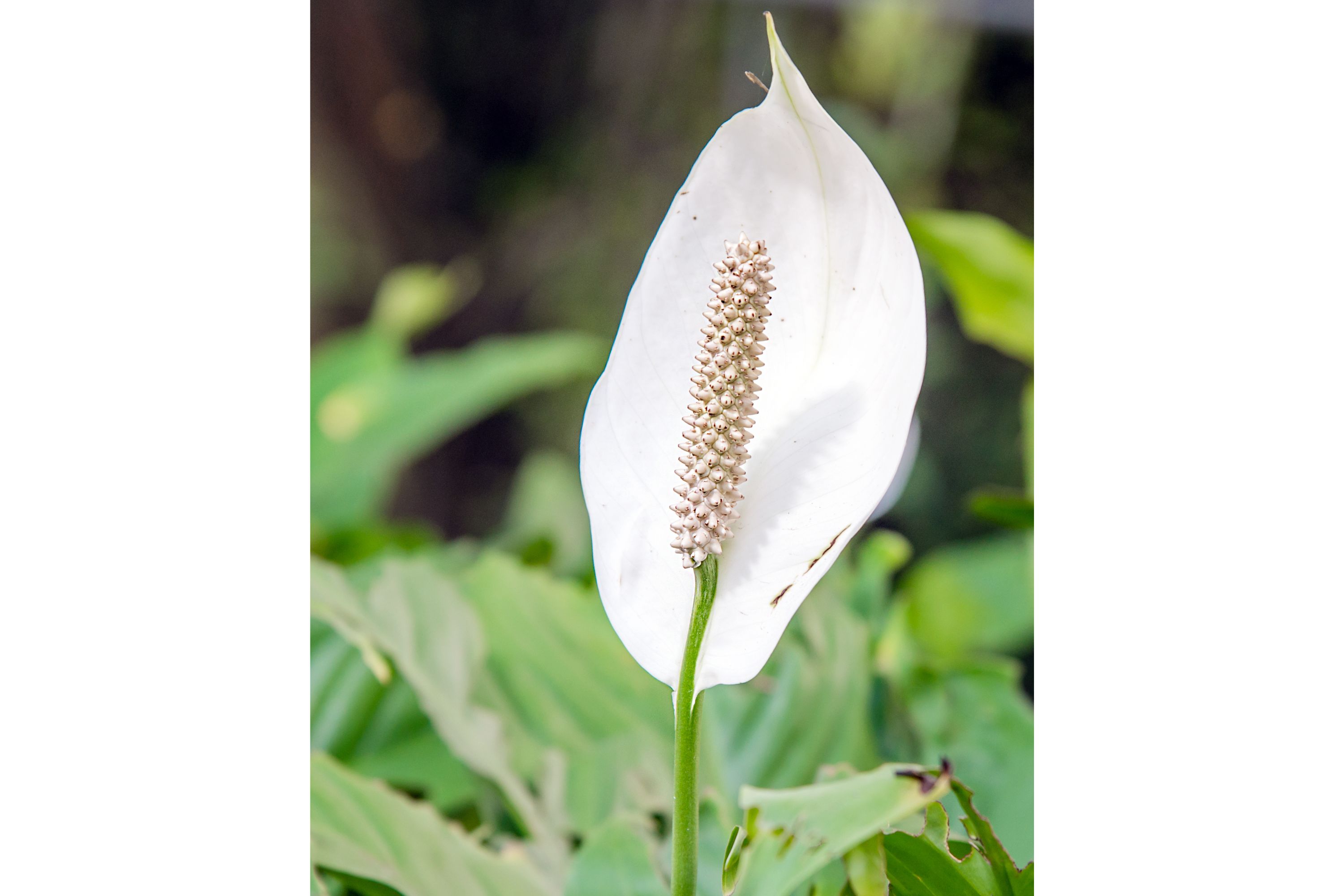Peace lily
(Spathiphyllum wallisii)

Description
Spathiphyllum wallisii, commonly known as the Peace Lily, is a popular houseplant that belongs to the Araceae family. It is native to the tropical regions of Central and South America, and is a popular plant because of its attractive foliage and elegant flowers. In this article, we will explore the characteristics, care and propagation of the Peace Lily. Description The Peace Lily is an evergreen perennial that typically grows to a height of 45 cm to 60 cm. The plant has glossy, lance-shaped leaves that are dark green in color and pointed at the tip. The leaves grow directly from the base of the plant and can reach a length of up to 25 cm. The flowers of the Peace Lily are trumpet-shaped and emerge from a white, spoon-shaped bract that resembles a leaf. The flowers are usually white in color and can last for several weeks. Care The Peace Lily is a relatively easy plant to care for, making it a popular choice for indoor gardens. Here are some tips to ensure that your plant thrives: Light: Peace Lilies prefer bright, indirect light. Avoid placing them in direct sunlight, as this can scorch the leaves. Water: Water your Peace Lily once a week, or when the top inch of soil feels dry to the touch. Be careful not to overwater, as this can lead to root rot. If your plant starts to droop, it may be a sign that it needs more water. Temperature: Peace Lilies prefer warm, humid environments. They can tolerate temperatures as low as 15°C, but they will not thrive in temperatures below 10°C. Fertilizer: Feed your Peace Lily every two weeks during the growing season with a balanced fertilizer. Do not fertilize during the winter months when the plant is dormant. Propagation Peace Lilies can be propagated through division. To do this, gently remove the plant from its pot and separate the root ball into two or more sections using a sharp knife. Each section should have a few leaves and healthy roots. Repot each section in a fresh potting mix and water thoroughly. Common Problems Despite being a relatively easy plant to care for, Peace Lilies can be susceptible to a few common problems: Brown tips on leaves: This can be caused by underwatering, over-fertilizing, or exposure to direct sunlight. To remedy this problem, water the plant regularly, reduce the amount of fertilizer you are using, and move the plant to a location with indirect sunlight. Yellowing leaves: This can be a sign of overwatering or poor drainage. To fix this issue, reduce the amount of water you are giving your plant and make sure that the pot has adequate drainage. Root rot: This can occur when the plant is overwatered. To prevent root rot, allow the soil to dry out slightly before watering and make sure that the pot has adequate drainage. Conclusion Spathiphyllum wallisii, or the Peace Lily, is a popular houseplant that is easy to care for and has attractive foliage and elegant flowers. By following the tips outlined in this article, you can ensure that your Peace Lily thrives in your indoor garden.
Taxonomic tree:







